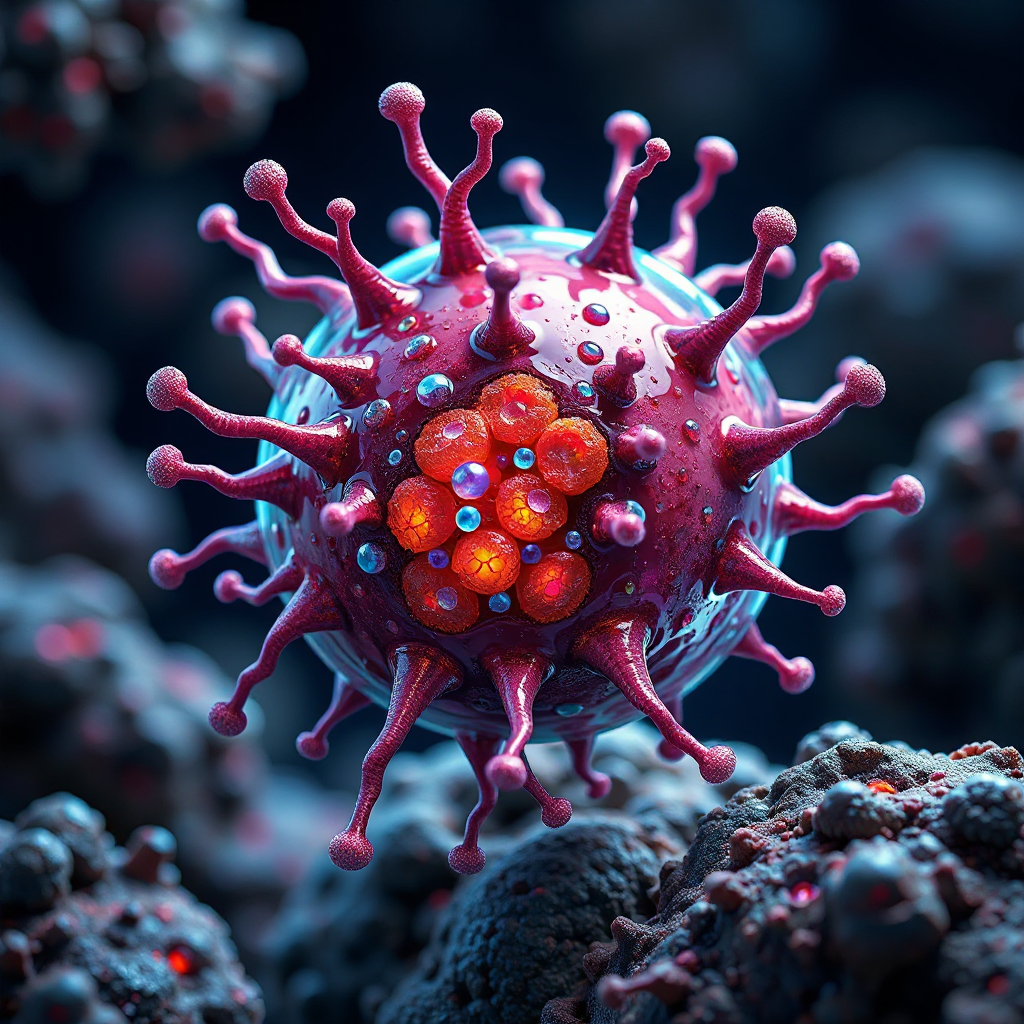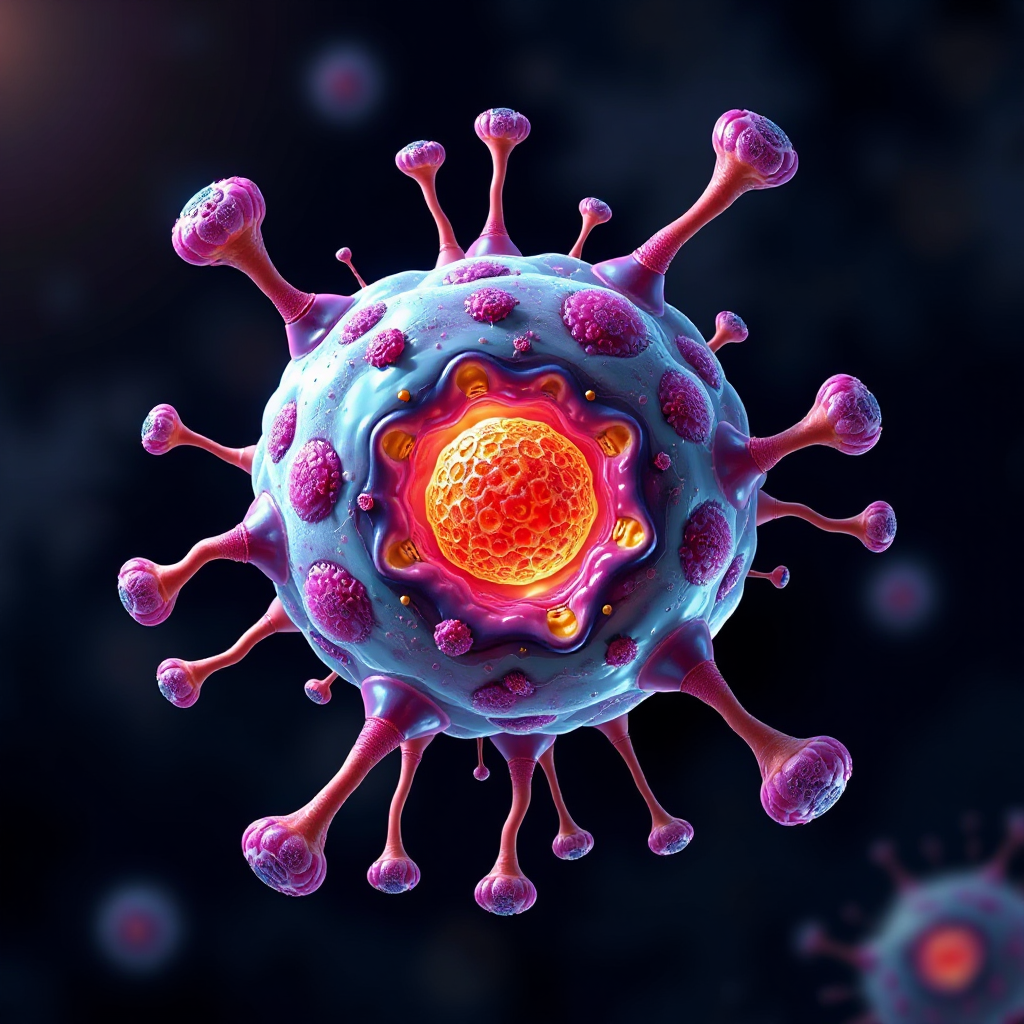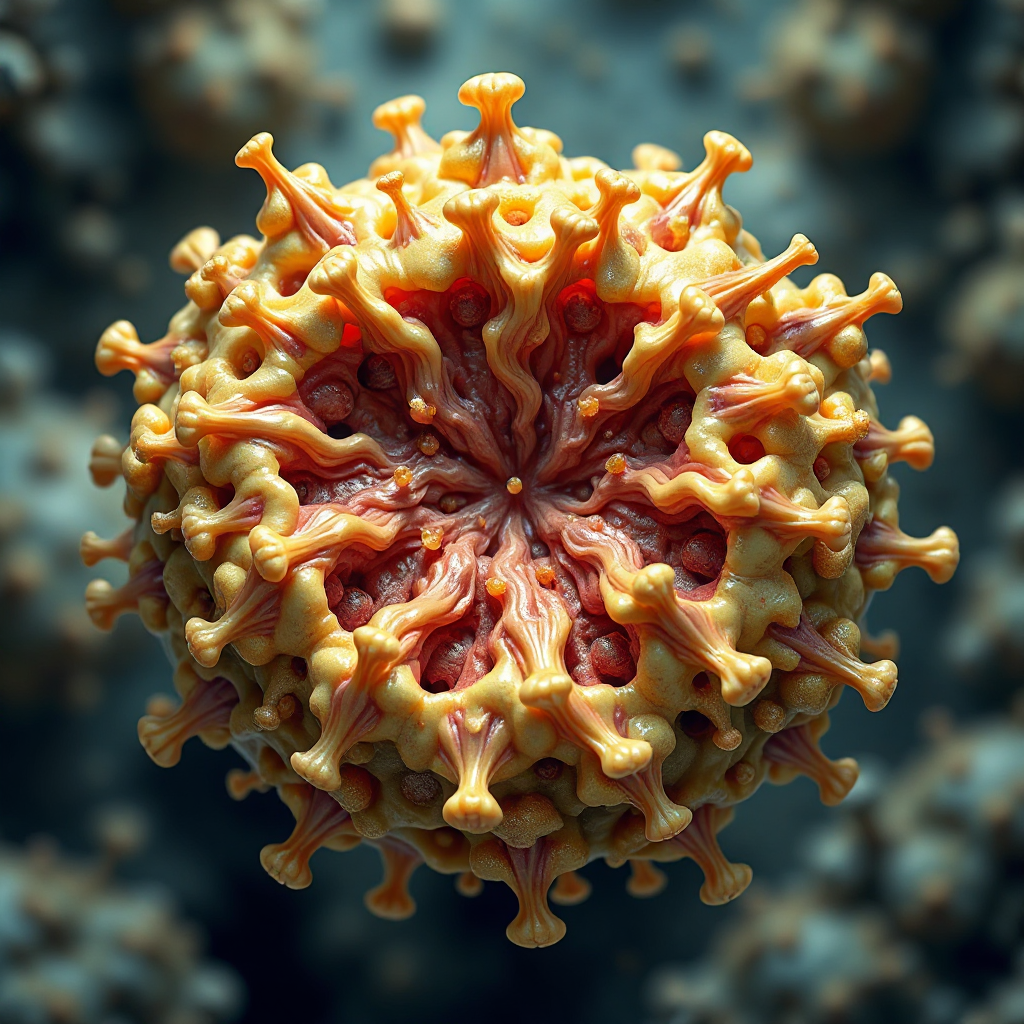What is Synovial Sarcoma and Its Symptoms

Synovial sarcoma is a rare type of cancer that develops in soft tissues. It often appears near large joints, such as the knees, and primarily affects young adults. This cancer accounts for 5% of all soft tissue sarcomas diagnosed each year. You might notice a painless lump or swelling at first, which can grow and cause discomfort over time. Recognizing these early signs is crucial. Early detection improves treatment outcomes, so staying alert to unusual changes in your body can make a significant difference.
Key Takeaways
Synovial sarcoma is a rare cancer that mostly affects young people. It often shows up as a painless lump near joints.
Finding it early is very important. Watch for strange lumps, lasting pain, or trouble moving to get better treatment results.
See a doctor if you notice any worrying signs. Quick medical help can improve your chances of getting better.
Knowing risks, like family history or age, can help you stay aware of your health.
Learn about treatments like surgery, radiation, and chemotherapy. You can also join clinical trials to try new therapies.
What is Synovial Sarcoma?
Definition and Characteristics
Synovial sarcoma is a rare form of soft tissue cancer. Fewer than 500 cases are diagnosed annually in the United States, making it one of the less common types of sarcomas. This cancer often develops near joints, but it can also appear in other areas of the body. Its tumors are classified into two types: monophasic and biphasic. These classifications depend on the appearance of the cells under a microscope, which is a unique feature compared to other soft tissue cancers.
You might wonder how synovial sarcoma differs from other cancers. Unlike many soft tissue cancers, it tends to affect younger individuals and grows slowly at first. This slow growth can make early detection challenging. However, recognizing its defining characteristics can help you stay alert to potential symptoms.
Common Locations in the Body
Synovial sarcoma can develop almost anywhere in the body, but it most commonly appears in the arms, legs, and feet. It often forms near joints, such as the ankles or wrists. Other possible locations include the lungs, abdomen, and pelvis. In some cases, it may even occur in the head, neck, or chest.
This cancer typically arises in deep tissues, making it harder to detect in its early stages. You should pay attention to any unusual lumps or swelling, especially in these areas. Early awareness can lead to quicker diagnosis and treatment.
Who is Most at Risk?
Synovial sarcoma primarily affects young adults, though it can occur at any age. Men are slightly more likely to develop this cancer, with studies showing a male prevalence of about 55%. However, certain types of soft tissue sarcomas, such as those in the uterus or breast, may occur more frequently in women.
If you are a young adult or notice any unusual symptoms, you should remain vigilant. While the exact cause of synovial sarcoma is unknown, understanding your risk factors can help you take proactive steps toward early detection.
Symptoms of Synovial Sarcoma

Early Symptoms
Painless lump or swelling
One of the earliest signs of synovial sarcoma is a painless lump or swelling. You might notice this lump near a joint, such as your knee or ankle. At first, it may not cause discomfort, which makes it easy to overlook. However, as the tumor grows, the lump can become more noticeable. Paying attention to any unusual growths on your body is essential for early detection.
Pain or tenderness as the tumor grows
Pain often develops as the tumor increases in size. Interestingly, long-standing pain at the tumor site is one of the earliest detectable symptoms. Research shows that 30.2% of patients with synovial sarcoma experienced pain before noticing any swelling. This pain can persist for months, with an average duration of 20 months before diagnosis. If you feel unexplained pain in a specific area, especially near a joint, it’s important to monitor it closely.
Advanced Symptoms
Numbness or tingling if nerves are affected
As synovial sarcoma progresses, it can press against nearby nerves. This pressure may cause numbness or tingling in the affected area. For example, if the tumor is near your wrist, you might feel a tingling sensation in your hand or fingers. These symptoms indicate that the tumor is affecting your nervous system and requires immediate medical attention.
Joint stiffness or reduced mobility
A growing tumor can also limit your ability to move a joint freely. You might experience stiffness or reduced mobility in the affected area. For instance, if the tumor is near your knee, bending or straightening your leg could become difficult. These changes can interfere with daily activities, making it harder to perform simple tasks.
When to Seek Medical Advice
You should consult a healthcare professional if you notice any unusual lumps, persistent pain, or changes in mobility. Early symptoms, such as a painless lump, might seem harmless, but they can signal a serious condition like synovial sarcoma. If you experience advanced symptoms like numbness or joint stiffness, seek medical advice immediately. Early diagnosis can improve treatment outcomes and increase your chances of recovery.
Causes and Risk Factors
What Causes Synovial Sarcoma?
Synovial sarcoma develops due to specific genetic changes in your body. Researchers have identified a consistent genetic mutation in patients with this cancer. This mutation occurs when parts of chromosome 18 and chromosome X join abnormally. This change disrupts normal cell behavior, leading to tumor growth.
Other factors may also contribute to the development of synovial sarcoma. These include:
Exposure to radiation
Contact with carcinogens like arsenic or polyvinyl chloride
Although these factors are linked to the disease, the exact cause remains unclear. Understanding these potential triggers can help you stay informed about your health.
Known Risk Factors
Genetic predispositions
Your genetic makeup plays a significant role in determining your risk of synovial sarcoma. Mutations in specific genes, such as NF1, APC, and TP53, have been associated with this cancer. If you have a family history of genetic disorders or cancer, you may face a higher risk.
Age and demographic considerations
Synovial sarcoma primarily affects young adults, though it can occur at any age. Men are slightly more likely to develop this cancer than women. If you are a young adult, you should remain vigilant about any unusual symptoms, especially if you notice lumps or swelling near your joints.
By understanding these risk factors, you can take proactive steps to monitor your health and seek medical advice when necessary.
Diagnosis of Synovial Sarcoma
Initial Medical Evaluation
When you suspect synovial sarcoma, your doctor will perform a series of evaluations to confirm the diagnosis. These steps often include:
Biopsy – A small tissue sample is taken from the suspected area and analyzed for cancer cells.
Computerized tomography (CT) scan – This imaging test provides a 3D view of the tumor's size and location. It also helps determine if the cancer has spread.
Magnetic resonance imaging (MRI) – Using magnets, this test creates detailed images to assess the tumor's characteristics and its impact on surrounding tissues.
These evaluations provide essential information about the tumor, helping your doctor decide on the next steps for treatment.
Diagnostic Tools
Imaging tests (e.g., MRI, CT scans)
Imaging tests play a critical role in diagnosing synovial sarcoma. A CT scan offers a comprehensive view of the tumor's size and location. It also helps detect any spread to other parts of your body. An MRI, on the other hand, provides highly detailed images of the tumor and surrounding tissues. This test is particularly useful for evaluating the tumor's relationship with nearby nerves, muscles, and blood vessels.
Biopsy procedures
A biopsy is the most definitive way to confirm synovial sarcoma. Doctors may use different methods to collect a tissue sample:
A small tissue sample is removed from the tumor and sent to a lab for analysis.
A surgical procedure may be performed to extract a larger tissue sample.
An image-guided needle biopsy can also be used to obtain a sample.
Once the sample reaches the lab, a pathologist examines it under a microscope. Additional tests may identify the molecular signature unique to synovial sarcoma, confirming the diagnosis.
Staging and Grading of Synovial Sarcoma
Doctors use staging and grading systems to determine the severity of synovial sarcoma. The grade reflects how aggressive the cancer is, based on a scoring system:
Grade | Description |
|---|---|
GX | The grade cannot be assessed. |
G1 | Total score of 2 or 3. |
G2 | Total score of 4 or 5. |
G3 | Total score of 6, 7, or 8. |
Staging depends on the tumor's location and whether it has spread. For example, tumors in the head and neck are staged differently from those in the abdomen. Clinical staging relies on physical exams and imaging tests, while pathologic staging examines tissue removed during surgery. These systems guide your doctor in planning the most effective treatment.
Treatment and Management of Synovial Sarcoma

Surgery
Surgery is the primary treatment for synovial sarcoma. Doctors aim to remove the tumor completely, ensuring a margin of 1-3 cm of healthy tissue around it. This approach reduces the risk of recurrence. Preoperative planning plays a critical role in determining the surgical method. Depending on the tumor's location, surgeons may perform a wide resection or a radical resection. In some cases, amputation becomes necessary, especially when the tumor cannot be fully removed. This occurs in about 20% of patients. If the tumor is near vital blood vessels, vascular resection and reconstruction may also be required. These procedures are common in the lower extremities due to the tumor's proximity to critical structures.
Radiation Therapy
Radiation therapy often complements surgery, especially when the tumor is close to nerves or blood vessels. Preoperative radiation can improve local relapse-free survival rates in advanced cases. The typical radiation dose ranges from 40-60 Gy. However, radiation therapy has potential side effects. Preoperative radiation may cause wound healing issues, while postoperative radiation can lead to long-term stiffness and swelling. These effects might impact the functionality of the affected limb. Despite these challenges, radiation therapy remains an effective tool for managing synovial sarcoma, particularly when surgical margins are narrow.
Chemotherapy
Chemotherapy is another option for treating synovial sarcoma, especially in advanced or metastatic cases. Doctors often use a combination of drugs to target cancer cells effectively. Commonly used drugs include doxorubicin, ifosfamide, and etoposide. Some regimens combine these drugs with others, such as gemcitabine or trabectedin. For example, the AIM regimen combines doxorubicin, ifosfamide, and mesna, while the MAID regimen includes mesna, doxorubicin, ifosfamide, and dacarbazine. These combinations aim to maximize the treatment's effectiveness while minimizing side effects. Chemotherapy can shrink tumors, making them easier to remove surgically or manage with other treatments.
Emerging Treatments and Clinical Trials
Advancements in medical research have introduced new treatments and clinical trials for synovial sarcoma. These emerging options aim to improve outcomes, especially for patients with advanced or resistant cases. You may find the following developments promising:
Researchers are exploring a murine monoclonal antibody targeting FZD10, which has shown potential in attacking synovial sarcoma cells.
A peptide vaccine derived from SYT-SSX is under development, offering hope for targeted immunotherapy.
A multicenter clinical trial is evaluating the combination of topotecan and carboplatin for stage IV sarcomas.
The FDA recently approved afamitresgene autoleucel, a groundbreaking therapy for advanced synovial sarcoma.
Additionally, precision medicine initiatives at institutions like Rutgers Cancer Institute focus on personalized treatment strategies. These approaches tailor therapies to the unique genetic makeup of your tumor, increasing the likelihood of success. Clinical trials are also testing innovative methods, including targeted therapies and immunotherapies, to address cases resistant to conventional treatments.
Here’s a quick overview of current treatment modalities:
Treatment Type | Description |
|---|---|
Radiation therapy | Shrinks tumors or eradicates residual disease post-surgery to prevent recurrence. |
Chemotherapy | Targets high-grade sarcomas and metastatic disease. |
Targeted therapy and immunotherapy | Emerging options for cases unresponsive to traditional treatments. |
Participating in clinical trials can provide access to cutting-edge therapies. Staying informed about these advancements ensures you can explore all available options.
Managing Side Effects and Recovery
Recovering from synovial sarcoma treatment requires a comprehensive approach. You can take several steps to manage side effects and improve your quality of life:
Seek early referral to a tertiary center for specialized care. These centers have multidisciplinary teams experienced in treating soft-tissue sarcomas.
Consider adjuvant chemotherapy if your tumor is large. This additional treatment can reduce the risk of recurrence.
Participate in clinical trials to access innovative therapies and stay updated on evolving treatment options.
Specialized care is essential due to the complexity of sarcoma treatment. You may also benefit from psychological support to address the emotional challenges of a cancer diagnosis. Patients often experience anxiety, depression, or feelings of helplessness. Caregivers may face similar struggles, so involving them in support programs can be beneficial.
Recovery also involves physical rehabilitation. Exercises to restore mobility and strength can help you regain independence. By working closely with your healthcare team, you can create a personalized recovery plan that addresses both physical and emotional needs.
Synovial sarcoma is a rare but serious condition that requires your attention. Recognizing its symptoms, such as unusual lumps or persistent pain, can lead to earlier diagnosis and better outcomes. Early detection plays a vital role in improving your chances of recovery:
It allows you to explore advanced treatment options, including clinical trials.
It ensures timely implementation of effective treatment strategies.
It provides access to a multidisciplinary care team for comprehensive support.
If you notice any unusual changes in your body, consult a healthcare professional promptly. Taking action early can make a significant difference in your treatment journey.
FAQ
What is the survival rate for synovial sarcoma?
The survival rate depends on factors like tumor size, location, and stage at diagnosis. On average, the five-year survival rate ranges from 50% to 60%. Early detection and treatment improve your chances of recovery.
Can synovial sarcoma spread to other parts of the body?
Yes, synovial sarcoma can metastasize, often spreading to the lungs or lymph nodes. Regular follow-ups and imaging tests help monitor its progression and guide treatment.
Is synovial sarcoma hereditary?
No, synovial sarcoma is not typically hereditary. It results from specific genetic mutations in your cells, but these changes are not passed down from parents to children.
How is synovial sarcoma different from other soft tissue cancers?
Synovial sarcoma often affects younger individuals and grows near joints. It also has unique genetic markers, making it distinct from other soft tissue cancers.
Can synovial sarcoma return after treatment?
Yes, synovial sarcoma can recur, especially if the tumor was not completely removed. Regular check-ups and imaging tests help detect recurrence early.
See Also
Understanding Chondrosarcoma: Key Symptoms To Watch For
Recognizing Symptoms of Leiomyosarcoma: A Comprehensive Guide
Kaposi Sarcoma Explained: Identifying Its Common Symptoms
